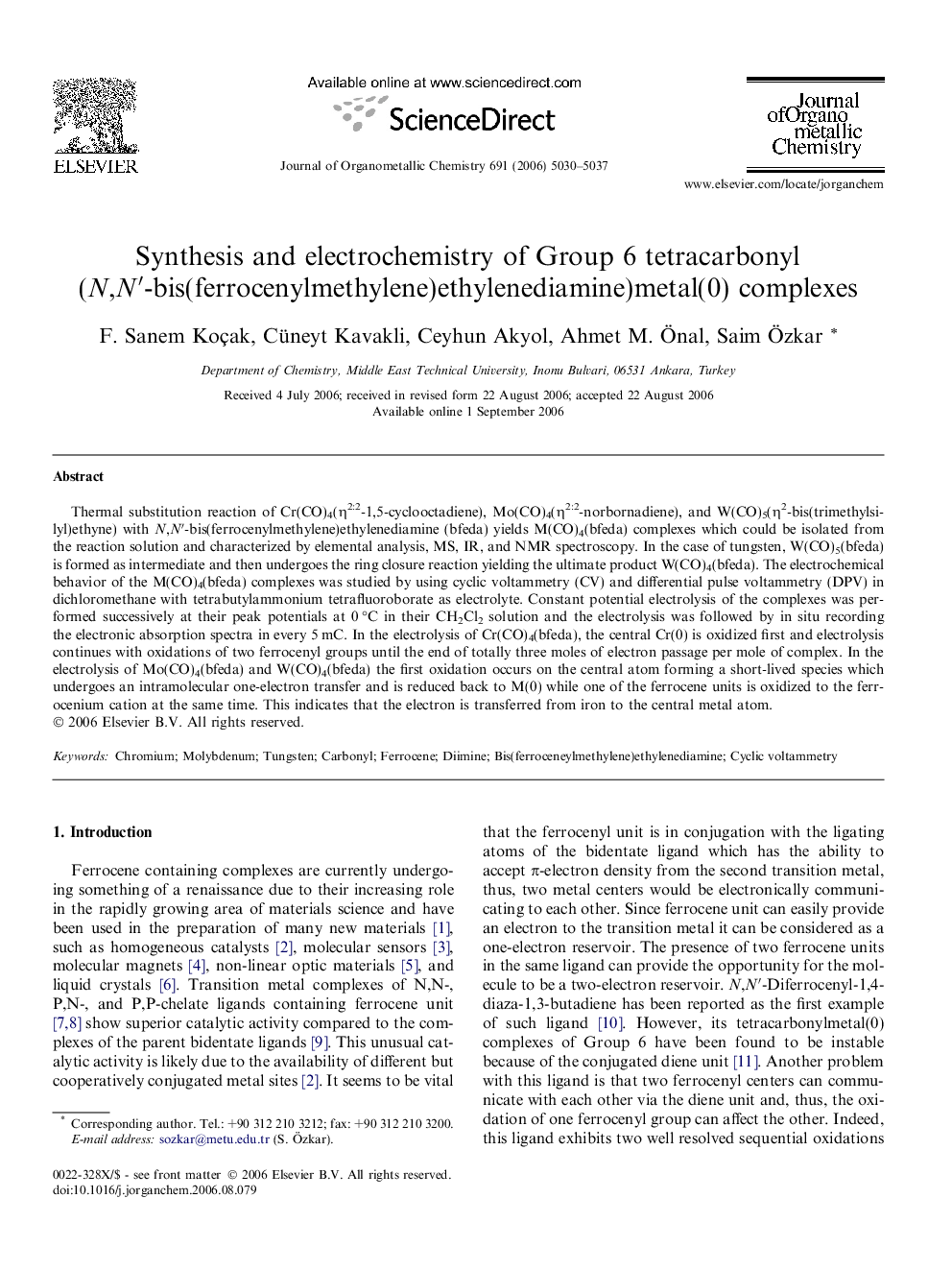| کد مقاله | کد نشریه | سال انتشار | مقاله انگلیسی | نسخه تمام متن |
|---|---|---|---|---|
| 1328461 | 977574 | 2006 | 8 صفحه PDF | دانلود رایگان |

Thermal substitution reaction of Cr(CO)4(η2:2-1,5-cyclooctadiene), Mo(CO)4(η2:2-norbornadiene), and W(CO)5(η2-bis(trimethylsilyl)ethyne) with N,N′-bis(ferrocenylmethylene)ethylenediamine (bfeda) yields M(CO)4(bfeda) complexes which could be isolated from the reaction solution and characterized by elemental analysis, MS, IR, and NMR spectroscopy. In the case of tungsten, W(CO)5(bfeda) is formed as intermediate and then undergoes the ring closure reaction yielding the ultimate product W(CO)4(bfeda). The electrochemical behavior of the M(CO)4(bfeda) complexes was studied by using cyclic voltammetry (CV) and differential pulse voltammetry (DPV) in dichloromethane with tetrabutylammonium tetrafluoroborate as electrolyte. Constant potential electrolysis of the complexes was performed successively at their peak potentials at 0 °C in their CH2Cl2 solution and the electrolysis was followed by in situ recording the electronic absorption spectra in every 5 mC. In the electrolysis of Cr(CO)4(bfeda), the central Cr(0) is oxidized first and electrolysis continues with oxidations of two ferrocenyl groups until the end of totally three moles of electron passage per mole of complex. In the electrolysis of Mo(CO)4(bfeda) and W(CO)4(bfeda) the first oxidation occurs on the central atom forming a short-lived species which undergoes an intramolecular one-electron transfer and is reduced back to M(0) while one of the ferrocene units is oxidized to the ferrocenium cation at the same time. This indicates that the electron is transferred from iron to the central metal atom.
N,N′-Bis(ferrocenylmethylene)ethylenediamine (bfeda) yields M(CO)4(bfeda) complexes (M = Cr, Mo, W) which could be isolated and characterized by elemental analysis, MS, IR, and NMR spectroscopy. In the case of tungsten, W(CO)5(bfeda) is formed as intermediate and then undergoes the ring closure reaction yielding the ultimate product W(CO)4(bfeda). The electrochemical behavior of the M(CO)4(bfeda) complexes was studied by using cyclic voltammetry and differential pulse voltammetry. It was shown that an electron is transferred from iron to the central metal atom.Figure optionsDownload as PowerPoint slide
Journal: Journal of Organometallic Chemistry - Volume 691, Issue 23, 15 November 2006, Pages 5030–5037